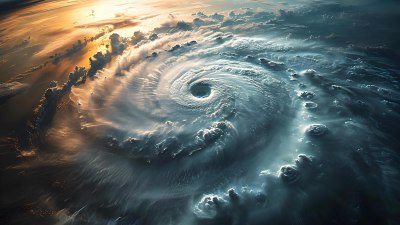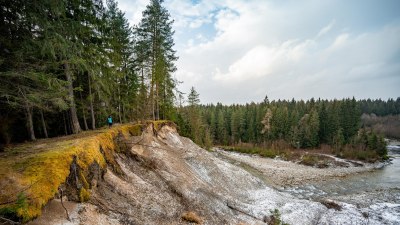The Science Behind Snowflake Shapes and Patterns
Explore the fascinating science explaining how snowflake shapes and patterns form, revealing nature's intricate ice designs.

Snowflakes captivate the imagination with their unique, intricate shapes and stunning symmetry. Despite their delicate appearance, each snowflake is a marvel of nature's physics and chemistry, forming through complex interactions between water molecules and atmospheric conditions. Understanding the science behind snowflake shapes and patterns illuminates how tiny environmental variations create breathtaking ice crystals unique in structure.
At its core, a snowflake is a single ice crystal formed from frozen water vapor in clouds. The molecular structure of water plays a vital role in determining how these crystals develop. Water molecules consist of two hydrogen atoms bonded to one oxygen atom, creating a bent shape that leads to hydrogen bonding between molecules. These bonds enforce a hexagonal lattice arrangement when water freezes, resulting in snowflakes almost always exhibiting six-fold symmetry.
Snowflake formation begins when water vapor in the air deposits onto a microscopic particle such as dust, pollen, or other aerosols. This process is called nucleation, which acts as the seed for ice crystal growth. As water vapor molecules collide with this nucleus, they lose energy and adhere, expanding the crystal lattice. Since the molecular structure favors hexagonal patterns, the growing crystal develops six symmetrical arms or branches, a pattern fundamental to snowflake morphology.
However, while the hexagonal symmetry is consistent across snowflakes, the diversity in their shapes and patterns arises from the environmental conditions they encounter during growth. Temperature and humidity levels within clouds fluctuate, and even minute changes influence how the water molecules deposit onto the crystal surfaces. These variables affect the rate and style of crystal growth, producing distinct morphologies such as plates, needles, columns, dendrites, and sectored plates.
Research has shown that temperature plays a critical role in snowflake morphology. For instance, at temperatures near -2 degrees Celsius, snowflakes often form thin, flat hexagonal plates. Around -5 degrees Celsius, slender needle-like crystals tend to develop. Between approximately -8 and -22 degrees Celsius, dendritic patterns—complex branching structures with ornate arms—are prevalent. Below -22 degrees Celsius, the growth often favors columns or hollow columns. This temperature-dependent transition is linked to how water molecules attach to different crystal facets with varying energy barriers.
Humidity also significantly impacts snowflake formation. Higher humidity levels promote rapid deposition of water vapor on the crystal, encouraging the development of complex branching structures such as dendrites. Conversely, lower humidity results in simpler plates or columns because the limited water vapor restricts the complexity of crystal growth. This interplay between temperature and humidity creates a rich diversity in snowflake shapes observed in nature.
Another factor influencing snowflake patterns is supersaturation—the difference between actual vapor pressure and the saturation vapor pressure over ice. When supersaturation is high, water molecules rapidly accumulate on the crystal, leading to intricate patterns and extensive branching. In contrast, low supersaturation slows growth rates, producing more compact and less detailed snowflakes. This relationship was demonstrated through laboratory experiments where scientists simulated cloud conditions, observing distinct morphological transformations with changing supersaturation.
Growth dynamics are also affected by the diffusion of water molecules through air. The vapor molecules must travel through the surrounding atmosphere to reach the crystal surface, and the rate of this diffusion determines how quickly facets of the crystal expand. Faster diffusion favors uniform growth across the snowflake's branches, whereas slower diffusion can cause irregularities or asymmetries. This effect depends on atmospheric pressure and the size of the growing crystal, further influencing the final snowflake pattern.
Certain environmental disruptions during the fall of a snowflake also impact its shape. Changes in cloud layering, wind shear, or temperature inversions can cause a snowflake to pass through zones with distinct conditions. Each zone can alter growth characteristics such as branching density, thickness, or symmetry. These transitions produce compound snowflakes with mixed features from multiple environments, enriching the catalog of observed snowflake designs.
On a microscopic scale, structural imperfections or dislocations within the ice crystal lattice can alter the pattern formation. Even though molecular arrangement tends toward perfection, disturbances during crystal growth may create irregular branch lengths or unusual facet shapes. Scientists use high-resolution microscopy to analyze these defects, gaining insight into crystal growth kinetics and environmental influences.
Beyond natural factors, snowflake morphology is influenced by the presence of impurities or chemical additives within clouds. Aerosol particles such as dust, soot, or biological substances can serve as nucleation sites with varying chemical properties, affecting initial ice crystal formation. Additionally, trace gases or pollutants may modify surface dynamics of growing snowflakes, altering their morphology subtly or significantly. Studying these interactions helps researchers understand atmospheric chemistry's influence on snowfall characteristics.
The study of snowflake shape formation is more than an academic curiosity. Understanding ice crystal growth mechanisms has practical implications in meteorology, climate science, and technology. Accurate weather models depend on representing snowflake microphysics to predict precipitation type and intensity. Snowflake structure influences cloud optical properties and radiative balance, impacting climate modeling. Furthermore, engineering applications such as anti-icing materials or remote sensing use insights from snowflake morphology.
Historically, the fascination with snowflakes dates back centuries. The iconic snowflake drawings of Wilson Bentley in the early 20th century popularized their study by showcasing thousands of photographed snowflakes. Contemporary research employs advanced imaging techniques and computer simulations to simulate and visualize snowflake growth at molecular levels. These efforts uncover the fundamental principles governing pattern formation and reveal the exquisite complexity embedded in natural ice crystals.
Computer models of snowflake growth have evolved significantly over recent decades. Researchers use algorithms based on diffusion-limited aggregation, cellular automata, and phase-field methods to simulate how environmental parameters affect growth patterns. These simulations reproduce realistic morphologies consistent with experimental and observational data, providing a powerful tool for exploring hypothetical conditions or inaccessible atmospheric layers.
In summary, snowflake shapes and patterns emerge from a combination of molecular structure, atmospheric conditions, and dynamic growth processes. The fundamental hexagonal symmetry arises from water chemistry and crystallography, while temperature, humidity, supersaturation, diffusion, and impurities intricately influence the diversity of forms. Minute changes in these factors produce endless variations, ensuring no two snowflakes are exactly alike. Nature’s artistry is thus a product of physical laws sculpted by the environment, crystallizing fleeting moments of atmospheric wonder into delicate ice masterpieces.
Looking forward, ongoing research continues to unravel the mysteries behind snowflake formation. Advances in spectroscopic techniques, microphysics modeling, and atmospheric sampling promise deeper understanding of cloud dynamics and precipitation microstructure. These insights not only satisfy scientific curiosity but also enhance our ability to predict weather, understand climate change, and design technologies inspired by natural ice crystal growth.











